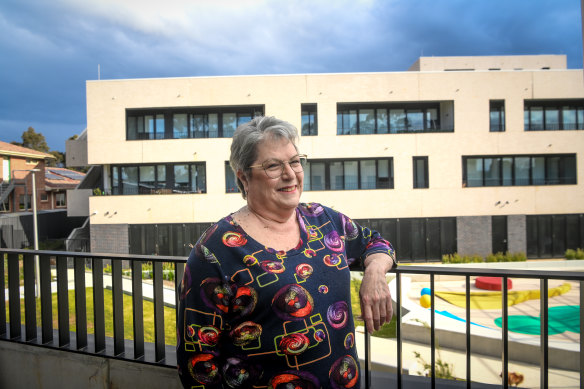Child carers, education aides and hairdressers are the professionals most likely to struggle to pay the rent as the Allan government mulls further reforms a year on from its landmark housing statement.
An average childcare worker who lives alone in metropolitan Melbourne has to spend more than 40 per cent of their income on rent for a median priced one-bedroom apartment.
Cleaners, sales assistants and hospitality workers living by themselves in a one-bedroom unit don’t fare much better, forking out just under 40 per cent of their average weekly earnings on rent.
Housing stress is usually defined as a household spending more than 30 per cent of its income on rent.
The findings are contained in fresh analysis of Australian Bureau of Statistics and Victorian government data by the peak body for affordable housing.
The Community Housing Industry Association policy paper found that workers in the lower range of moderate incomes were struggling to keep a roof over their head due to the cost-of-living crisis.

Nola Blent, a casual disability support worker who lives in Heidelberg West, says it’s no longer possible to live on a single income.Credit: Justin McManus
The demographic shift means a fresh wave of Melburnians cannot afford to live near their place of work, and are being pushed into the outer suburbs. More than 37,000 key workers commute 30 kilometres or more across Melbourne, the policy paper found, while more than 10,000 travelled 50 kilometres or more for work.
Casual disability support worker Nola Blent, who lives in Heidelberg West in the city’s north, was lucky to be placed in affordable housing in March.
Previously, she was renting in the private market and living with her adult daughter, while having to travel to Melbourne’s western suburbs for work.
“It’s not always been like this. At one stage it was possible to live on a single income,” Blent told The Age.
“Once upon a time, dad was the only one that worked, mum stayed home and looked after the kids, they put the kids through school, had a car.
“You can’t possibly do that any more.”
In Victoria, public and affordable housing is available to low- to moderate-income households.
Public housing is owned and managed by the government, while community housing is managed but not always owned by not-for-profit organisations. In both cases, tenants pay below-market rent. Social or affordable housing is the umbrella term that applies to both models.
Homes Victoria defines affordable housing as 90 per cent of market rent, or 30 per cent of the moderate income band, whichever is lower.
But Community Housing Industry Association acting chief executive Jason Perdriau said the problem was that there were other definitions of affordable housing.
The national rental affordability scheme, for example, defines affordable housing as 80 per cent of market rent. It’s 74.9 per cent, according to the Australian Tax Office.
Perdriau said that a year on from the state government’s housing statement, a single definition was needed that captured people on lower incomes.
“Sticking with different definitions of affordable housing will mean Victorians earning below the median income will continue to fall through the cracks,” he said.
“More essential workers won’t be able to afford to live in the communities where they work, meaning residents who can afford to live in these areas could lose out on quality goods and services.”
Other organisations calling for more housing reform include Tenants Victoria, which has been lobbying the government to extend the mandatory notification period for rent increases from 60 days to 90.
An Allan government spokesperson said the government would make additional housing announcements in coming weeks.
Blent said further reforms for renters would be great but, failing that, she just wanted the government to build more affordable houses.
“There should be more of them,” she said.
Start the day with a summary of the day’s most important and interesting stories, analysis and insights. Sign up for our Morning Edition newsletter.